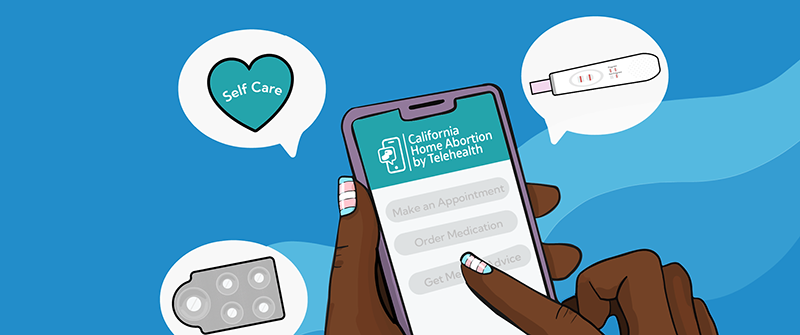
The California Home Abortion by Telehealth (CHAT) team at UCSF, led by Ushma Upadhyay, PhD, MPH, recently wrapped up a successful first year of research. Jennifer Ko, MLIS serves as project director and is excited to manage one of the largest completed telehealth patient studies evaluating patient experience, accessibility, and health equity.
The patient-centered study for medication abortion began in California but has expanded to 22 states and has already amassed data from over 3,000 patients. Among these patients, over 1,000 have opted to complete study surveys upon treatment. The study captures patient experience from initial intake to a follow-up four weeks after.
“There is too much power taken away from the person seeking an abortion versus those who can provide it. It shouldn’t be this difficult to put the medication into the hands of the patient,” Ko says.
Ko explains that in theory abortion care can be quite simple as the patient already knows they are pregnant and wishes to terminate their pregnancy. Typically, patients are aware of their health history such as their last menstrual period. The treatment itself is universal and proves to be more safe and effective than other over-the-counter medications like Tylenol. Any extra measures that complicate the process of obtaining abortion creates barriers of access.
The Food and Drug Administration (FDA) has long imposed restrictions on the abortion medication Mifepristone through their Risk Evaluation and Mitigation Strategies (REMS) drug program. These restrictions are not based in scientific evidence and have resulted in a myriad of hurdles including requiring abortion providers to self-disclose prior to writing the prescription and making the patient sign for consent. In some cases, pharmacists also must apply for certification before handing off the medication to the patient. These restrictions can be exasperated in states that have strict or anti-abortion laws.
Upon releasing early findings to the FDA, Ko and her team were excited to learn that in reviewing the REMS requirements, the FDA permanently lifted the in-clinic dispensing requirement for Mifepristone medication. While this is a big milestone, the CHAT study hopes the FDA will remove the REMS restrictions entirely.
In phase two of the CHAT Study, Ko and her team will take a qualitative approach; delving deeper into patient experience, outreach, and information dissemination. Patient interviews will strive to understand and document people’s experiences of accessing and using telehealth services for abortion and its impact on health equity, particularly or those who face the most stigma, distance, and financial barriers. The study has partnered with California Latinas for Reproductive Justice (CLRJ) and UCGHI’s Center of Expertise in Women’s Health, Gender, and Empowerment (WHGE) Student Ambassador Program. CLRJ will assist with the language barriers of access for Spanish speakers while the UCGHI student ambassadors will distribute literature, provide social media outreach, and develop blog pieces on the CHAT website.
With recent reports from the Supreme Court that Roe v. Wade may be overturned, the CHAT study could not be more timely. The study will continue to provide scientific evidence to the FDA about the unnecessary burden caused by the REMS program with the goal of sharing knowledge and creating a support system.
“We are potentially on a trajectory where there will be large swaths of the country with strict restrictions or outright bans on abortion care. Telehealth and medication abortion, if not already, will be absolutely essential to access. Our focus is to build a wealth of evidence to support legislation that will allow people to get abortion pills when and as they need them. Ultimately we want our research to be able to help give people autonomy and empowerment over their own bodies and reproductive options.” Ko says.
